Tami’s Travels: Full posts on each ghost town to come
Following the four-day camping trip and my ladies’ Ghost Towns & Treats trip, I planned to relax and stay at home on Labor Day weekend. That thought lasted a total of two days.
When friends Mary and Justin put together a short run on Labor Day, I jumped at the chance to go.
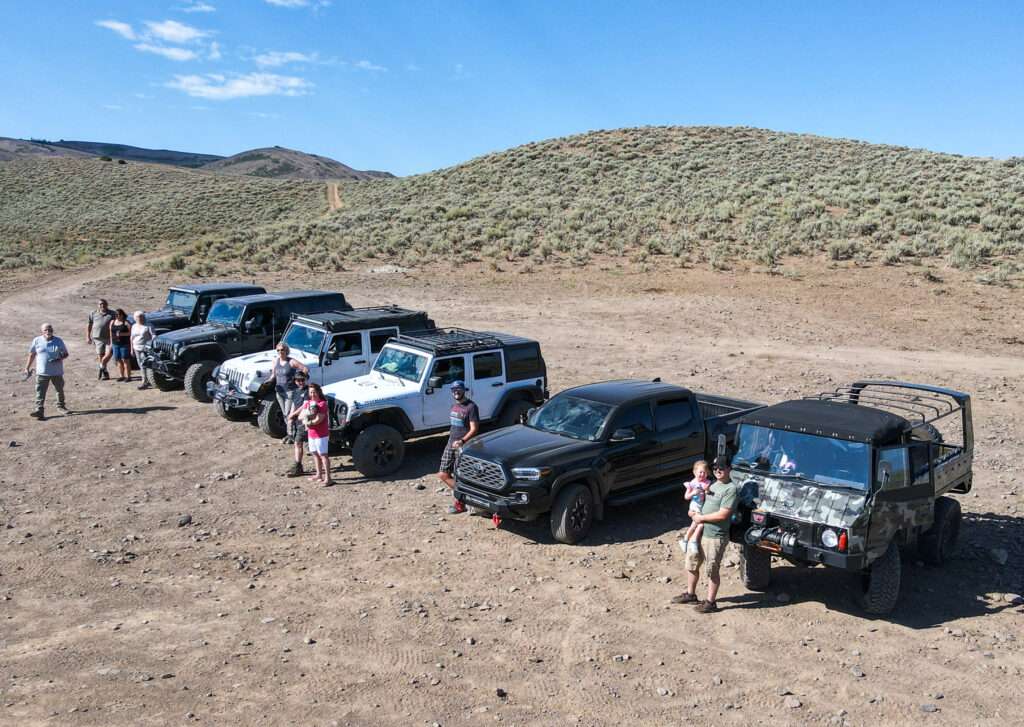
I asked the family if they wanted to do a run with me, but they wanted to relax. I asked my little one if she cared if I went or would prefer me to stay home. She looked perplexed and asked if I really wanted to do a run in the heat. It took me a second to realize she thought I wanted to go running. 😆 She should have known better; I love working out but hate running. If you ever see me running, I highly suggest you run too.
So, on Labor Day morning, I packed up the Jeep, Hubby handed me my coffee and said, “Have a nice day at work, Dear.”
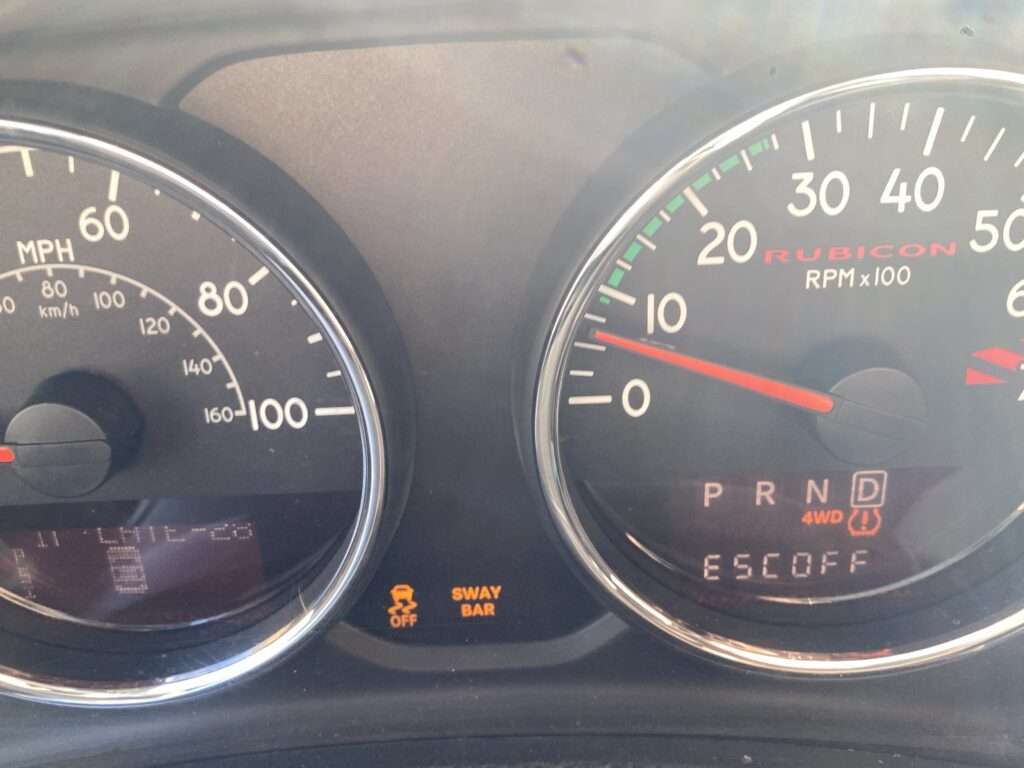
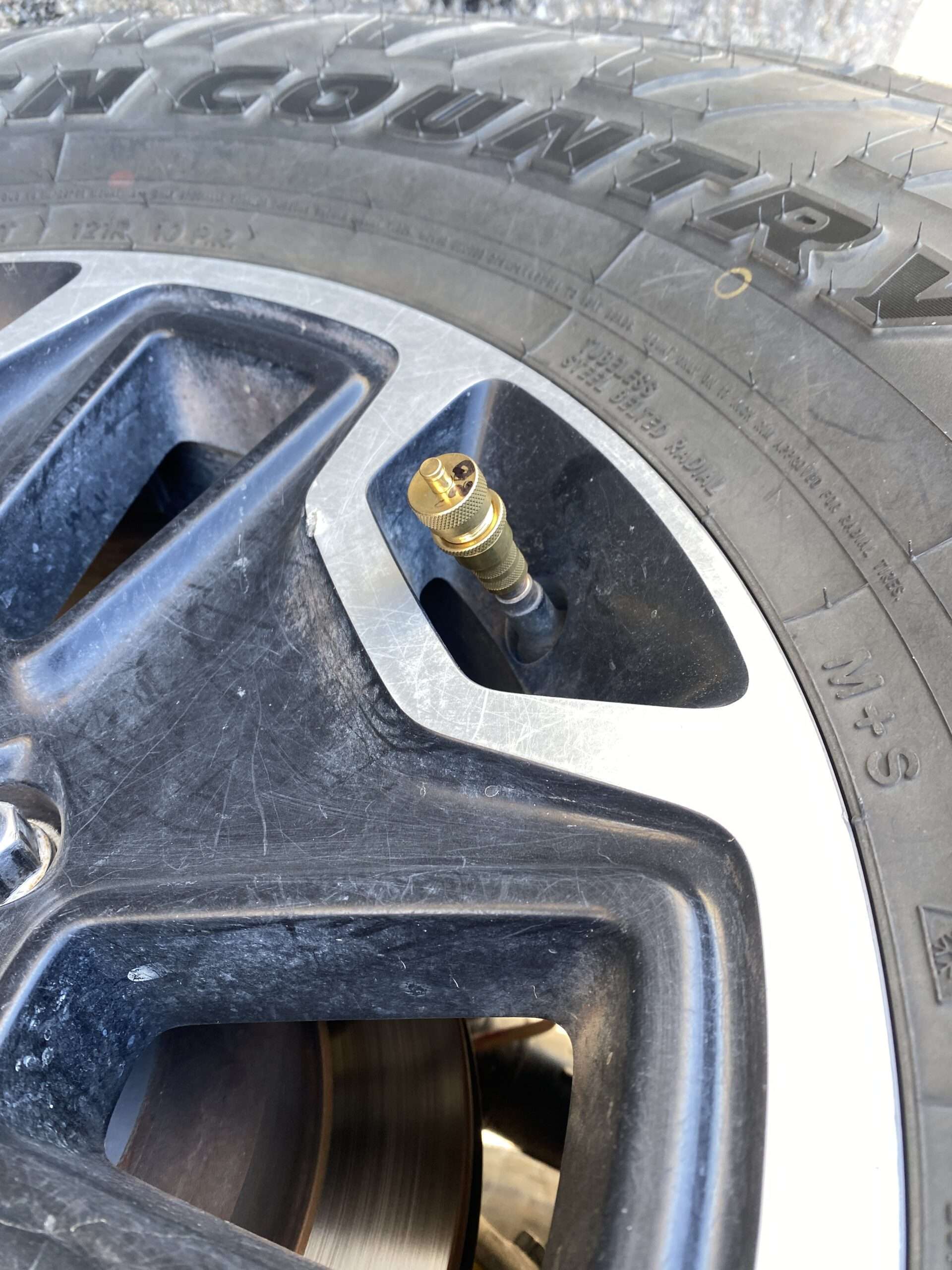
Our group headed out with the most unusual vehicle I have been on a trip with, a 1974 Pinzgauer. Hubby had once talked about getting one to convert for camping.
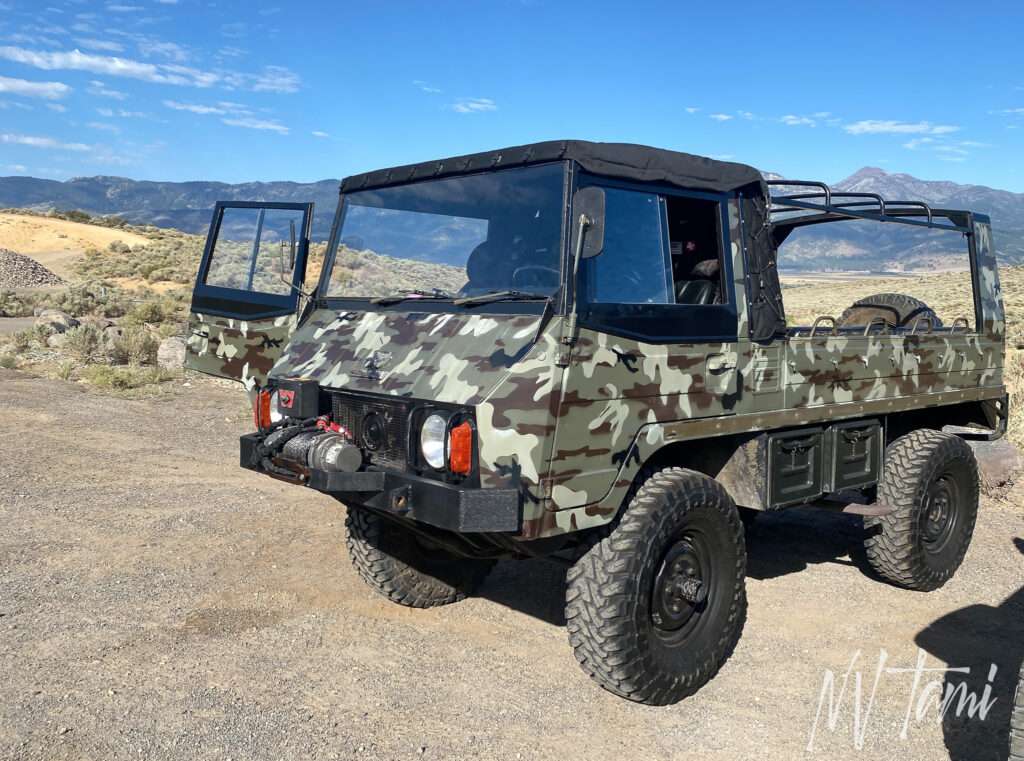
We didn’t spend much time at each site, it was too hot to hike around, but I visited them in springtime.
Jumbo
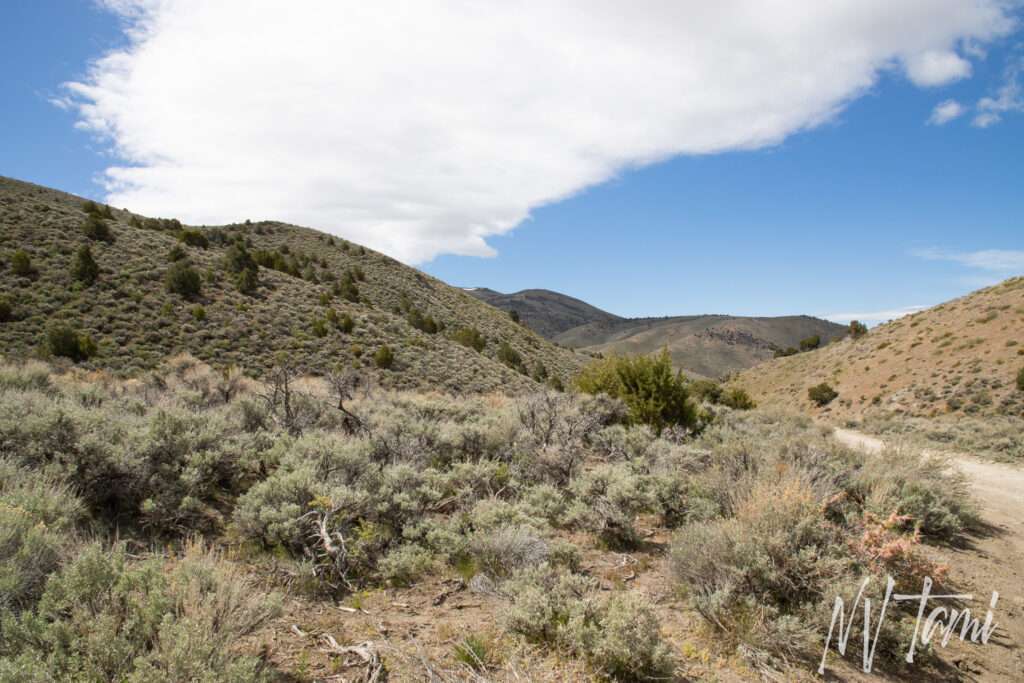
Jumbo was a small mining camp established in 1907. The town had a hotel, assay office, grocery store, and a saloon, likely more than one. Several mills dotted the hillside, including a 10-stamp mill. Jumbo received a post office in 1908, discontinued in 1910, with service transferred to Virginia City. Mill production ceased in 1912 and the town was ghosted.
5-Mile Reservoir
In October 1871, engineer Hermann Schussler proposed bringing water from Hobart Creek to Virginia City. The suggested route included flume and tunnel to Red House, pipe to Franktown Creek Lakeview, inverted siphon pipe to Five Mile Reservoir, then flume to Virginia City.
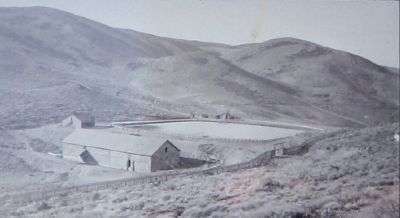
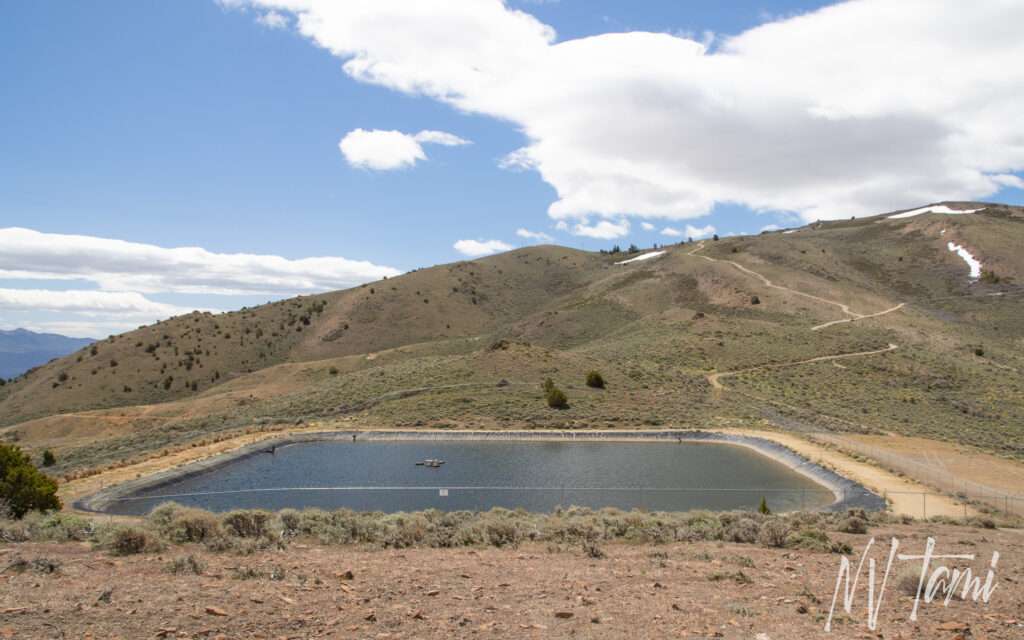
(Historica photo credit: HMDB)
On June 11, 1873, construction started on the flume pipeline. The V&T Railroad delivered iron to Lakeview, where it was formed into the pipe on site. Workers laid the final section of pipe on July 25, 1873; an astonishing seven miles of pipe was installed in rugged terrain in only six weeks.
Half-Way House
I haven’t researched yet, but Half-Way House is at the peak overlooking Gold Hill and Washoe Valley. I think this was a station stop on the Jumbo and Ophir toll roads.
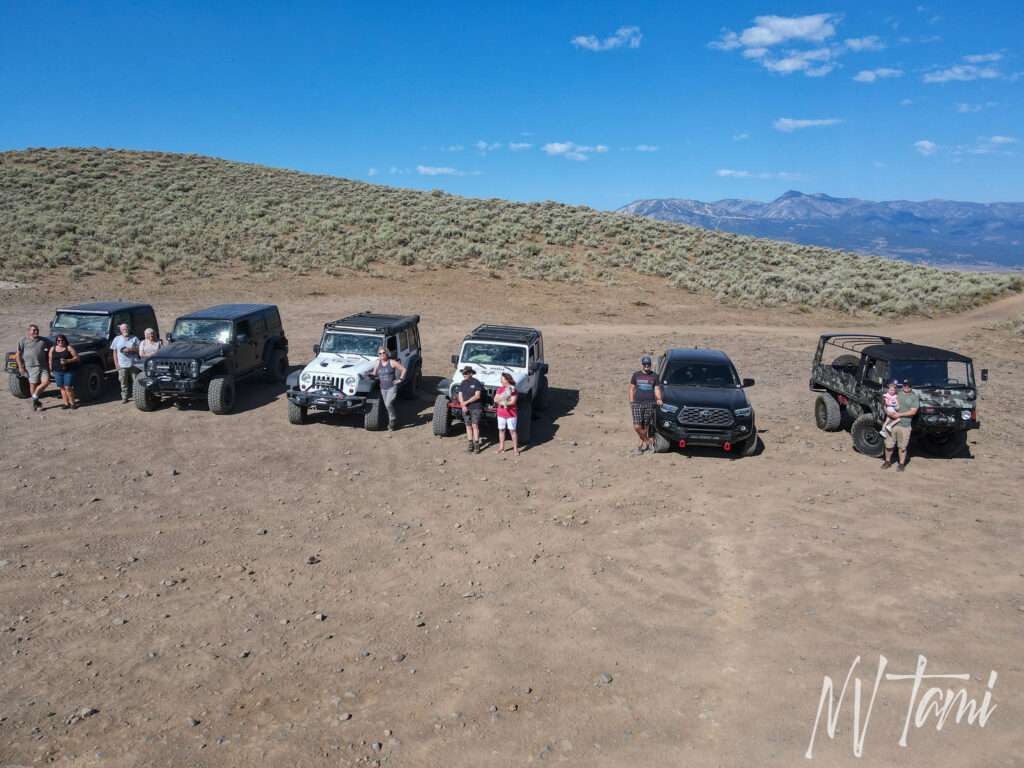
Ophir Grade was built in the 1860s to connect Virginia City and the mills in Washoe Valley, including Ophir Mill. No structures remain, but square head nails and broken pottery litter the site, dating to the late 1800s.
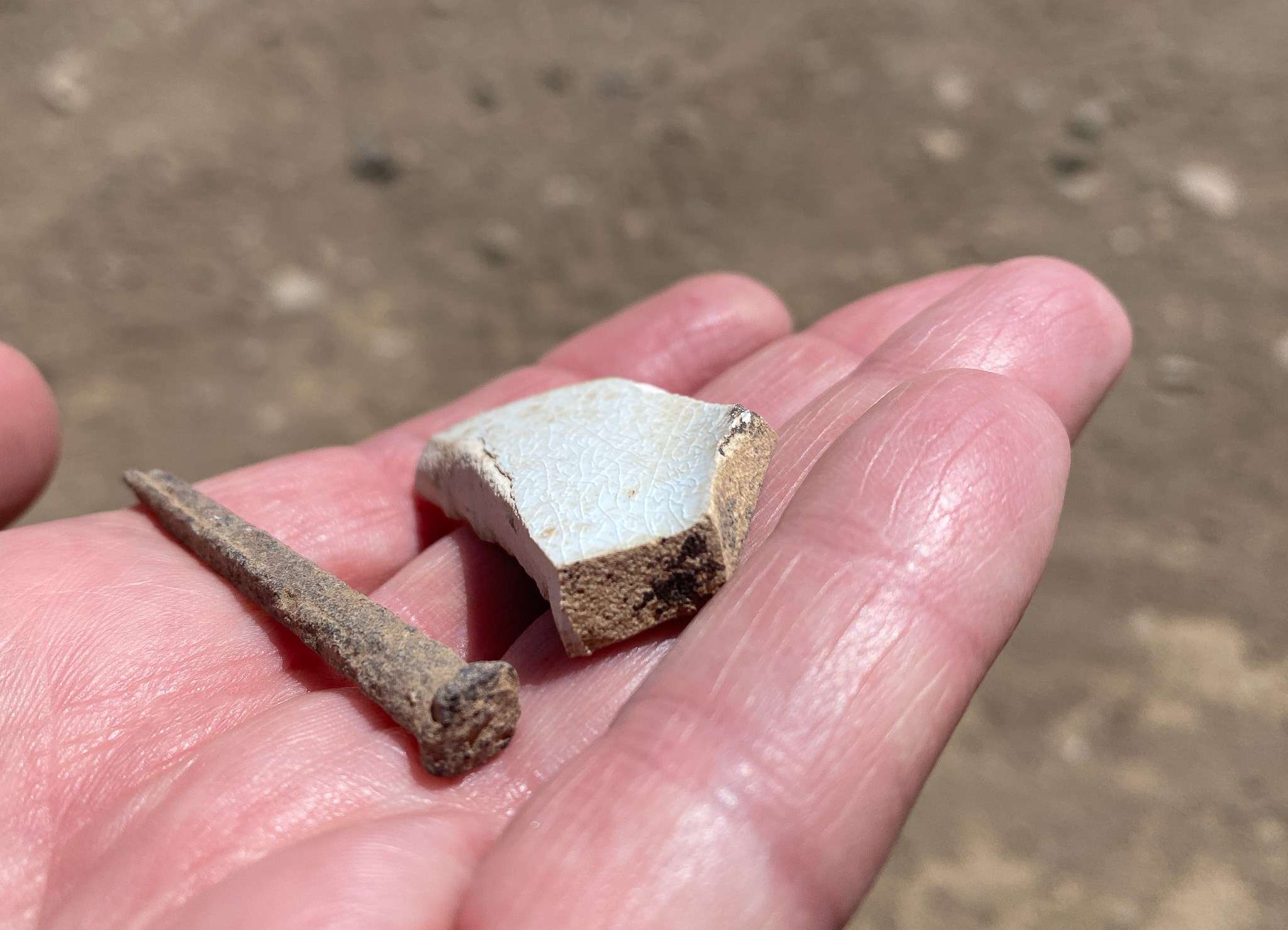
Sadly, Half-Way house is where the Jones brothers lost their lives one hundred and fifty years ago. Searchers found the frozen bodies of the boys under the snowbank; the storm had claimed their lives. Their trusted horse had stood watch over their snowy grave for three days and nights. Their heartbroken family interred the brothers in the Masonic section of the Gold Hill Cemetery.
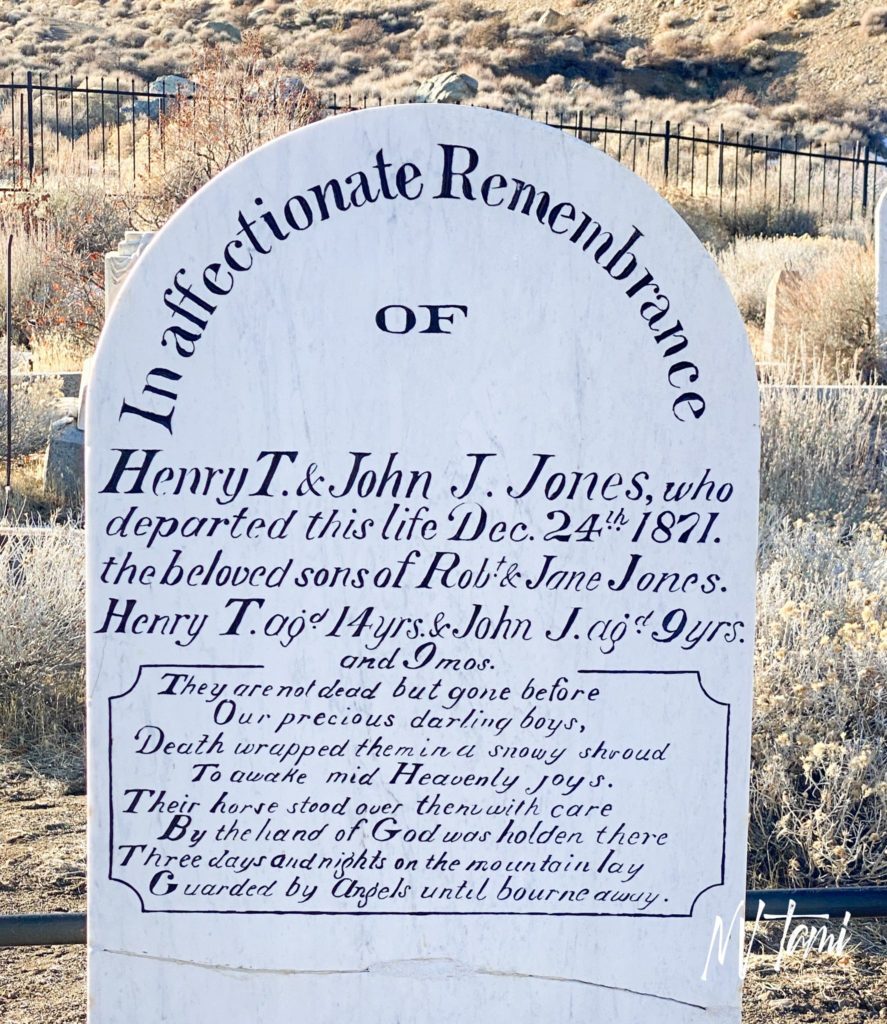
Breakdown
Well, darn it, a downside of classic vehicles is they break down, even more than a Jeep. I’m sure this never happens in convenient places like home and the mechanics. And it’s not like you can run down the street to O’Rileys and get parts for a fifty-year-old military vehicle.
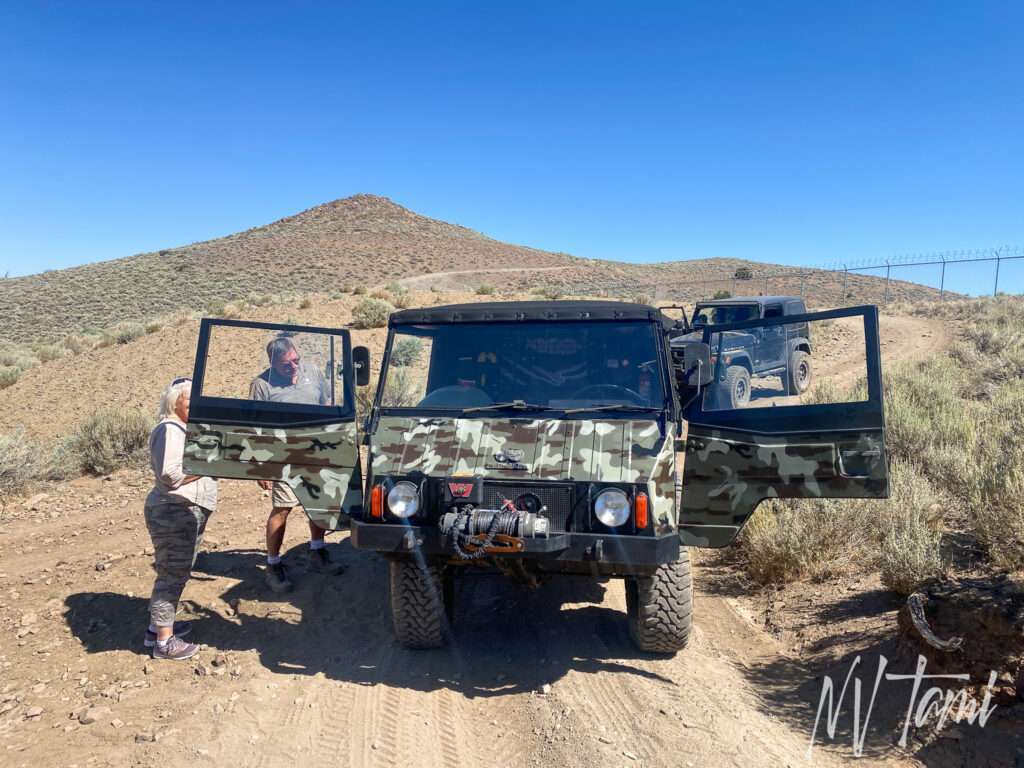
At a crossroads below 5-Mile Reservoir, the Pinz. stopped running. Thankfully, Scott is a fantastic mechanic, and he disassembled it and found the prefilter failed, allowing gunk into the gas tank (this is the extent of my mechanical terminology). His adorable side-kick hung out in a Jeep while dad got the Pinz running.
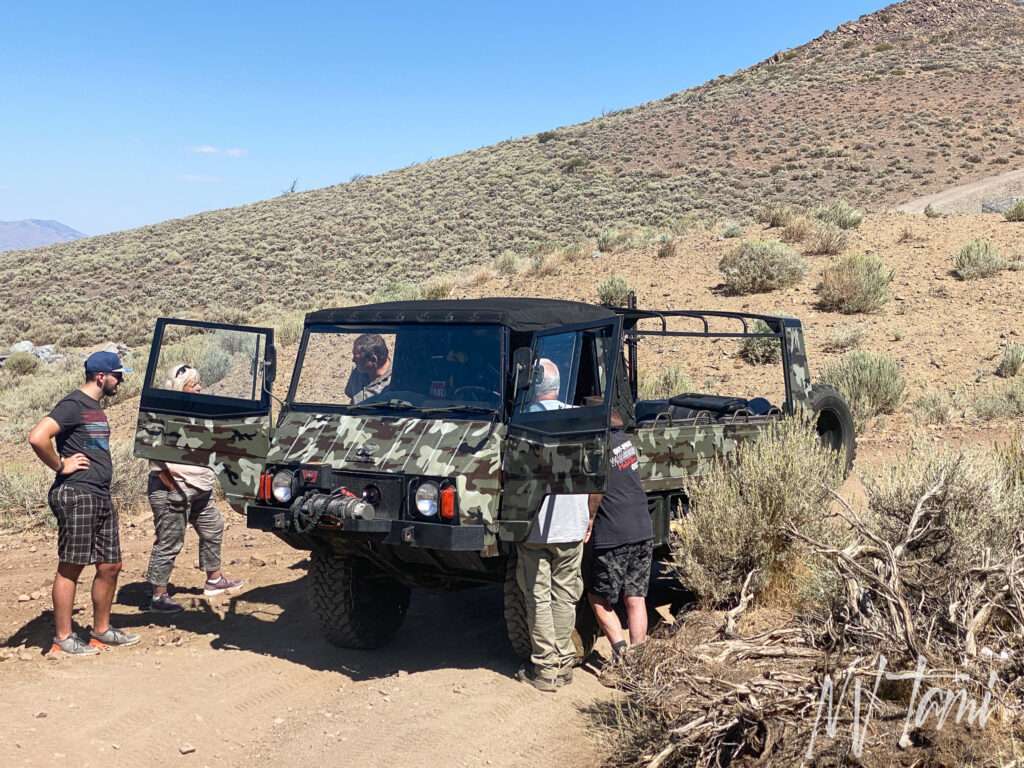
Unfortunately, we were all parked around the crossroads as there wasn’t a wide enough location to pull off the road. So when vehicles came along, we played musical Jeeps, moving this way and allowing them around. Everyone had to stop to look at the unusual off-road vehicle. I heard one woman say, “Hey, I know you; I follow you!”
Catholic Cemetery
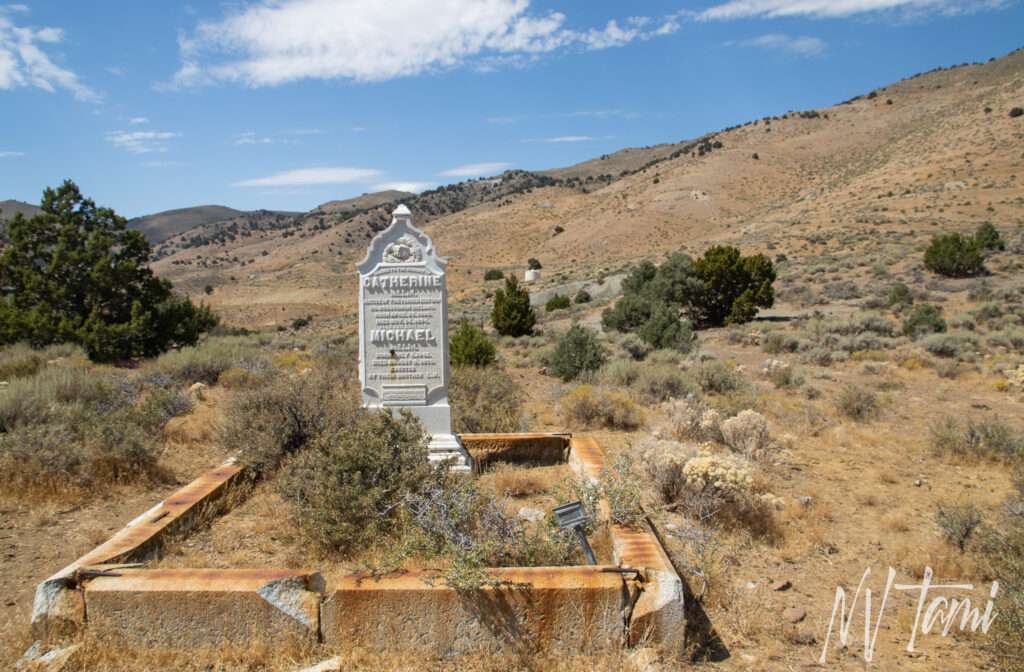
On a previous trip, Mary noticed the glint of white in the distance. She and Justin explored and found a cemetery. A few people thought it was an Irish cemetery, but I discovered it is Catholic Cemetery. The cemetery has been incorrectly included with the larger Gold Hill Cemetery, which has a Catholic section. But this cemetery is a mile from the larger and better-known cemetery.
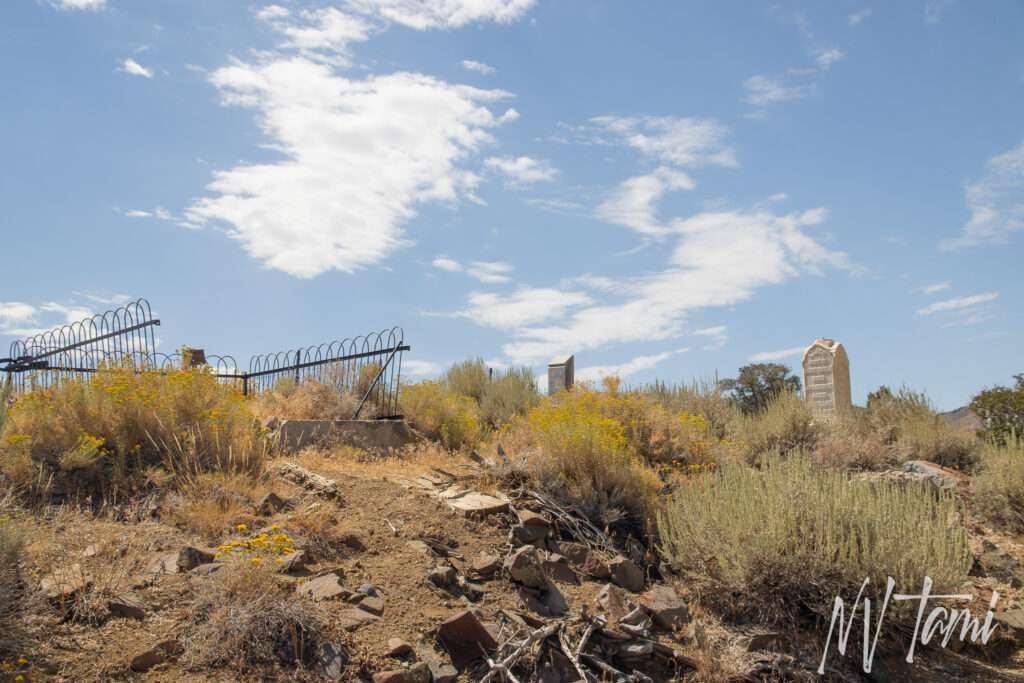
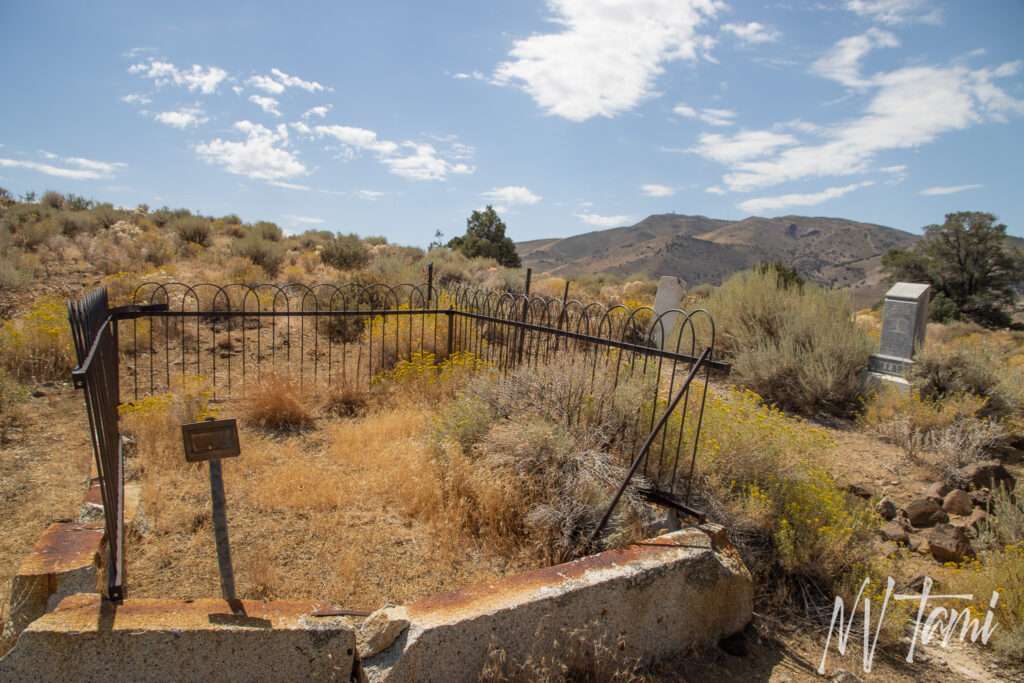
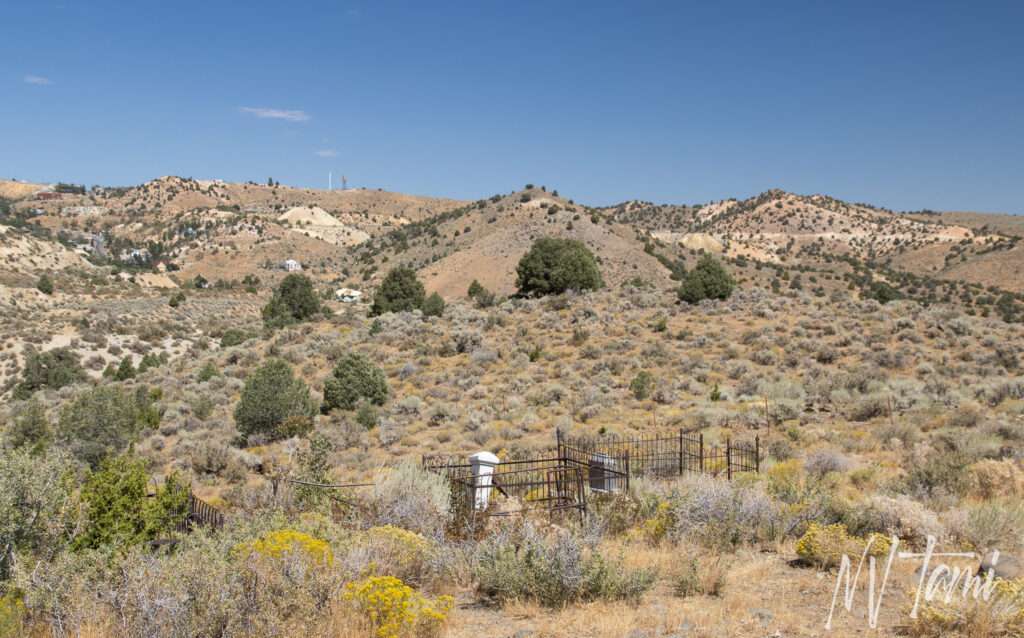


Gold Hill Catholic Cemetery appears to be split into two sections. They may be the same as many of the graves are unmarked. I will have to explore more when it is cooler.
Unfortunately, the Pinz. had more issues, this time with the starter. A bump start got it running, but they decided it was best to head home. As much fun as a classic vehicle would be, I know we don’t have the needed skills to own one.
Combination Shaft
The group’s final stop was the Combination Shaft. I have been to the Combination shaft multiple times, but always above.
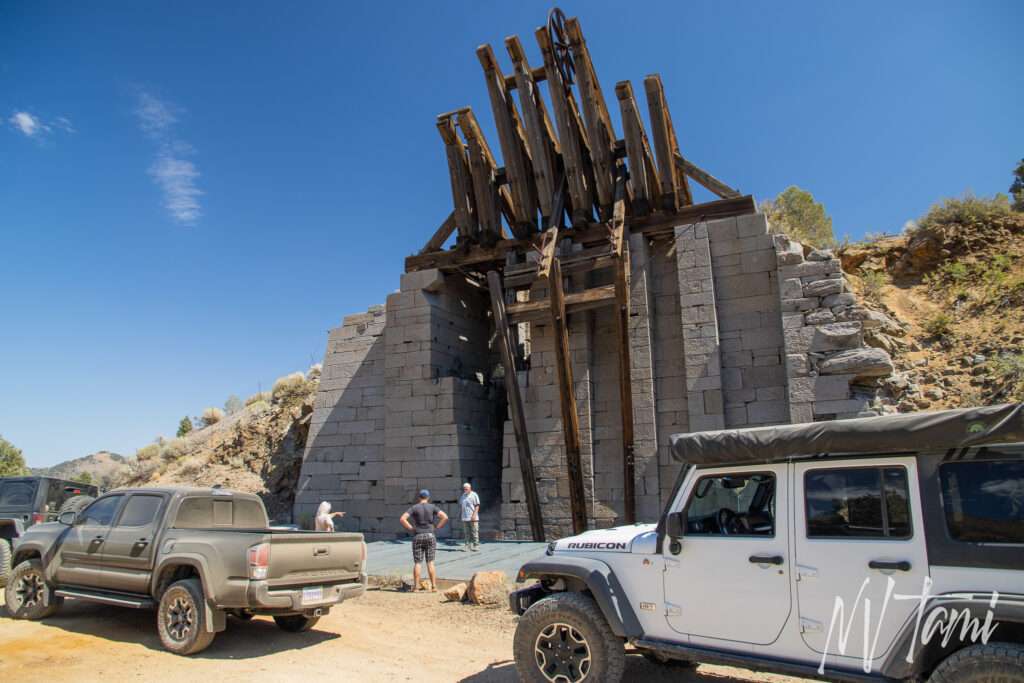
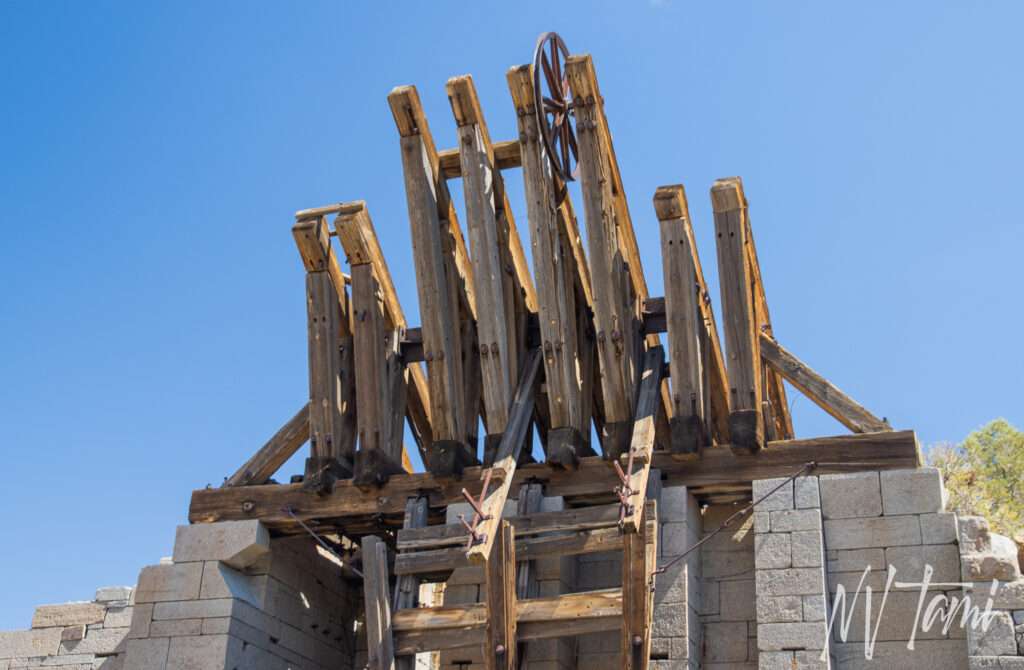
The combination shaft was started in 1875 and reached 3250 feet. The shaft has been covered, but you can still see through the grate.
I wanted to throw a rock down to see how long it took to hit bottom, but I’m not too fond of heights. Justin took my hand and walked me out a little way onto the grate. I can’t explain the feeling of looking down into a 3,000-foot pit; It is an experience I would be ok never repeating. I threw my rock and hit the one cross beam. I called it good and escaped back to the security of the earth under my feet.
Johntown
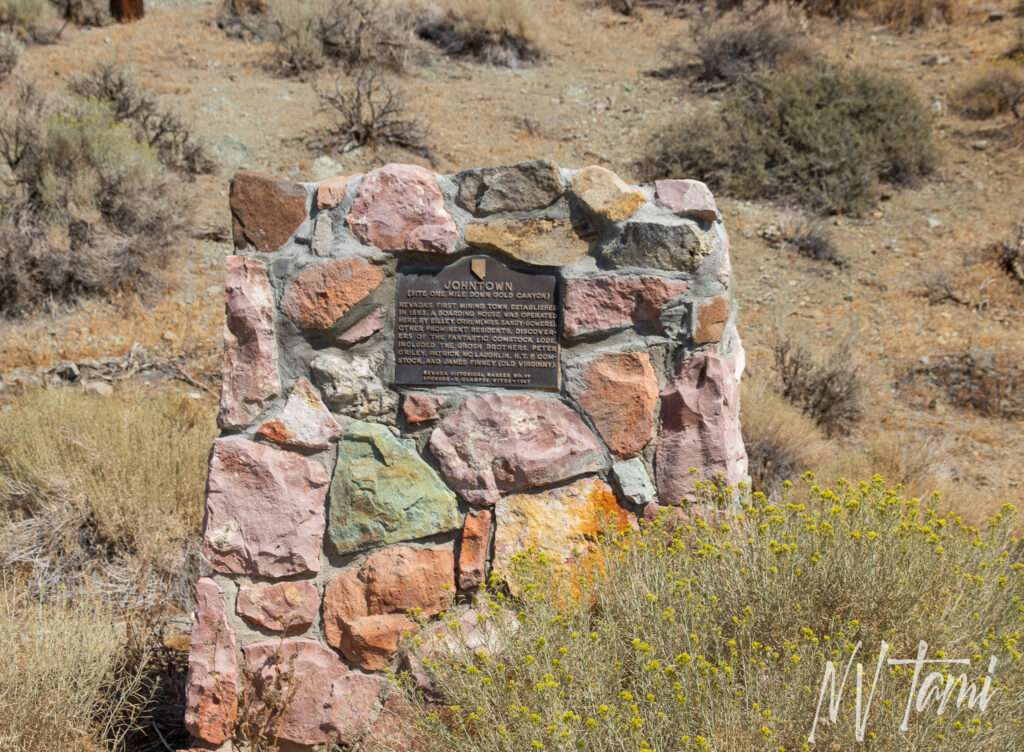
As I was already on the truck route, I decided to take it back to Dayton instead of doubling back through Gold Hill and Silver City. I made a brief stop at the sign to Johntown so I could eat lunch.
I have not heard of anyone locating the townsite or evidence of Johntown, but I took a drive down Gold Canyon. Much of Gold Canyon is now private property, which includes a large grouping of houses and quarry. I found one stone foundation closer to Gold Hill, but the location is a mile from the location of Johntown.
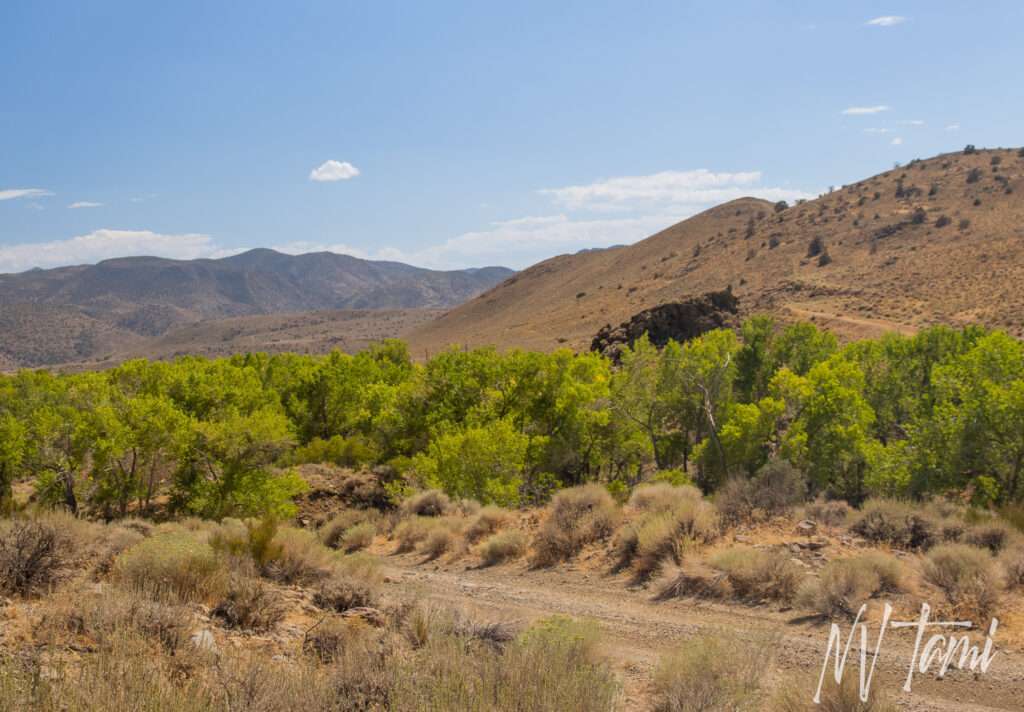
I have other stories I need to finish, but after discovering Johntown was Nevada’s first ghost town, and the origin of the name, I went down a rabbit hole. The story will be coming soon!
Want more ghost towns?
For information on more than five hundred ghost towns in Nevada & California, visit the Nevada Ghost Towns Map or a list of Nevada ghost towns.
References
- Gamett, James and Stan Paher. Nevada Post Offices: An Illustrated History. Nevada Publications, 1983.
- Lingfenfelter, Richard E. And Karen Rix Gash. The Newspapers of Nevada: A History and Bibliography 1854-1979. University of Nevada Press, 1984. Page 122.
- Nevada News Group: Johntown, Neveda’s first ghost town
- Nevada State Journal: Pioneer Times in Dayton Recalled in Brief review of of Activities of one of the State’s Well known families. December 1, 1940
- Wikipedia: Johntown, Nevada

Anonymous says
We thoroughly enjoyed your article which captured the great time that was had with a fantastic group!
Justin and Mary💕
Tami says
Thank you again, Justin and Mary for a great day!